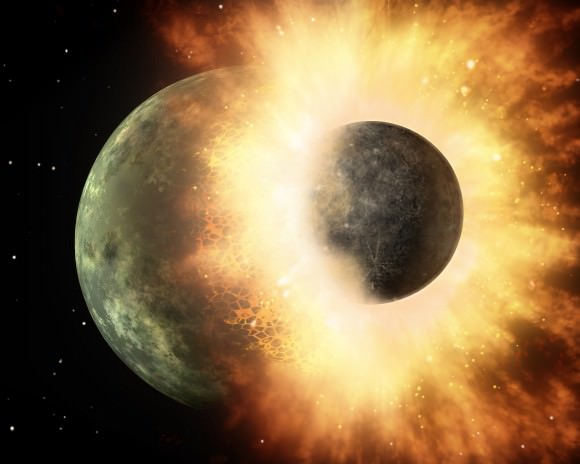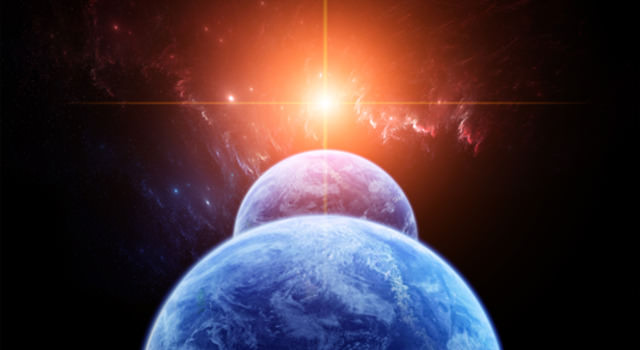One big driver in the search for exoplanets is whether life can exist elsewhere in the Universe. In fact, a major goal of the Kepler space telescope is to discover an Earth-like planet in the habitable zone of a star like our Sun.
But what about having two Earths orbiting close to each other for billions of years? Is this even possible? A new study suggests that yes, this could happen. Imagine the implications for planetary searches if a double Earth is possible.
With current technology it’s hard to spot an Earth-sized planet, let alone resolve two, but if such planets exist it presents interesting questions. Could they be habitable? How do they form? More study is needed.
The study says double Earths can happen if they form at least half a Sun-Earth distance from their star. In what scientists say is the first-ever study considering binary Earths they suggest a scenario where two rocky bodies get close to each other early in their Solar System’s formation. They don’t collide (such as what likely formed our Moon), but they’re close enough to be within three or so radii of each other.

“There is a good reason to believe terrestrial binary planetary systems may be possible,” read a press release from the California Institute of Technology. “In a grazing collision the angular momentum is too high to be contained within a single rotating body (it would fission) and if the bodies barely touch then they could retain their identity. However, it requires an encounter where the bodies are initially approaching each other at low enough velocity.”
Scientists simulated these planetary encounters using a simulation, dubbed Smooth Particle Hydrodynamics, which has been used in the past for scenarios such as the collision that created the Moon. The scenarios showed that a collision between two Earth-sized planets would only produce a Moon. However, if the bodies came close enough to produce tidal distortion on each other, the planets could form a binary system.
The research was presented at the Division for Planetary Sciences meeting of the American Astronomical Society this week by undergraduate Keegan Ryan, graduate student Miki Nakajima, and planetary science researcher David Stevenson, all of the California Institute of Technology. A press release did not disclose plans for publication, or if the research is peer-reviewed.
Source: California Institute of Technology


Dibs we call them Eminiar 7 and Vendekar!
Kudos for remembering that episode!
“they’re close enough to be within three or so radii of each other.”
Wow, the tidal forces! These places would be lava oceans =)
Yes, the tidal forces would probably be significant at the time of capture and for some time after. But over time the system would likely loose angular momentum in the same way as the Moon-Earth system. This would increase the separation between the planets and thus decrease the tidal effects.
If they have lots of tides, then they are taking energy out of the orbital system. They can’t do this forever. If there are double planets like this, they will probably become tidally locked before long.
Why insisting on a collision? What about 2 Lagrange-Planets or co-orbital planets like Saturn moons Janus and Epimetheus (with horseshoe orbits)? I think, this should also be possible for planets.
Especially the latter case woud be interesting!
Anyway, the assumption for creation of the moon seems to be collision of Proto-Earth with a proto-planet in a previously co-orbital orbit, so not to far from above scenario.